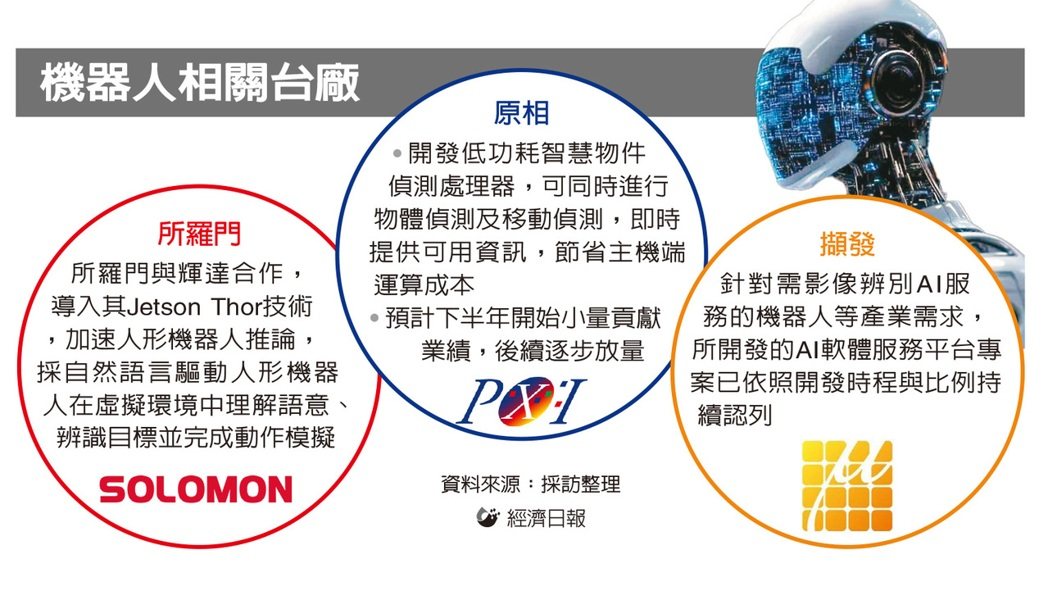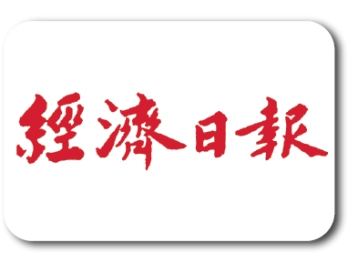MICROIP expands AI software services to capture opportunities in collaborative robotics
September 7, 2025
Special thanks to Economic Daily News for highlighting MICROIP's efforts in AI and robotics.
With the rapid rise of physical AI applications, robotics has become a key focus area for MICROIP (Listed in Taiwan: 7796).
Building on our expertise in ASIC design and AI software services, we are addressing industry needs for AI-powered image recognition across robotics, semiconductors, industrial automation, and smart transportation.
Our initiatives are steadily moving forward and are expected to deliver meaningful results in the future.
Looking ahead, collaborative AI robots will be a significant driver of MICROIP's growth and a core enabler for the future of intelligent industries.
The following is an excerpt from Economic Daily News: “Robotics Opportunities Explode, Concept Stocks Heat Up: PixArt, MICROIP, Solomon Actively Expanding.”
By Kaddy Chung, Economic Daily News, Taipei
In the wave of physical AI, robotics applications are rapidly gaining momentum. Besides key industry giant NVIDIA, several Taiwanese companies, including PixArt (3227), MICROIP, and Solomon (2359), are actively investing in the sector, with expectations of continued benefits as related businesses expand.
Recently, Solomon announced an expanded collaboration with NVIDIA, introducing its Jetson Thor technology to accelerate humanoid robot inference. The system enables humanoid robots to understand semantics, recognize targets, and perform motion simulations in virtual environments using natural language commands.
Solomon stated that the company integrates Jetson Thor with the open-source Vision-Language-Action (VLA) model Isaac GR00T N1.5 and the open-source robot simulation platform Isaac Sim to develop a natural language-driven humanoid robot simulation system. Users can simply input commands such as “pick up the red can,” and the humanoid robot can execute multi-step actions in the virtual environment, significantly simplifying related workflows.
Solomon emphasized that the integration of Jetson Thor with the Isaac platform represents a new stage in robotics technology, evolving from passive task execution to robots capable of language-vision understanding and autonomous decision-making.
Sensor IC manufacturer PixArt is also developing a robotics-related product line. Since AI sensing requires edge computing to process collected data, sending all data back to the cloud would consume significant time. Therefore, the need for sensing and recognition at edge devices has naturally emerged, with initial applications in security cameras and smart factories.
PixArt has developed a low-power intelligent object detection processor. The company noted that performing AI computation on the sensor brings many benefits, including saving bandwidth, reducing computing costs and power consumption, improving response speed, and enhancing information security. These products have been under development for some time, and are expected to contribute modestly to revenue starting in the second half of the year, gradually scaling up thereafter.
Additionally, MICROIP, which provides ASIC design services and AI software design services, plans to apply its solutions to robotics. The company’s AI software service platform projects, developed for industries such as robotics, semiconductors, industrial automation, and smart transportation that require AI-based image recognition services, are progressing according to development schedules. Collaborative AI robot-related business is expected to become an important driver of MICROIP’s revenue growth.



